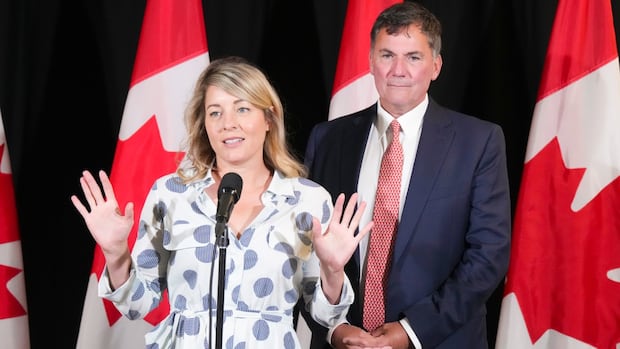Poilievre hopes young people are listening as he appeals for record turnout

Pierre Poilievre is making a bold move to capture the attention of young voters as he emphasizes the need for the “biggest voter turnout in Canadian history” to overturn what some polls are indicating as a certain Liberal victory, according to political analysts.
It is noted that newly eligible voters, particularly men, are inclined to support Poilievre’s Conservatives. However, this demographic is historically the least likely to participate in elections, as highlighted by David Coletto, founder and CEO of Abacus Data, an Ottawa-based polling and market research firm.
Coletto emphasized the importance of an extraordinary level of turnout for Poilievre to secure a win. He stressed the need to engage younger, less consistent voters who may have never participated in an election before.
CBC’s Poll Tracker currently shows the Conservatives with 38.7% popularity, a figure that typically indicates a majority government in previous elections. However, recent polls suggest a shift in voter support towards the Liberals, who currently hold 42.5% support.
Poilievre recently rallied in Calgary, urging attendees to reach out to disheartened individuals and offer them hope through voting for a change. He emphasized the necessity of record-breaking voter turnout to bring about the desired change for Canadians.
To secure a victory, Coletto mentioned that the Conservatives must overcome the Liberals’ advantage among older voters, who are more likely to show up at the polls. He pointed out that Justin Trudeau’s success in the 2015 election was partly due to his ability to attract young voters, a strategy Poilievre seems to be replicating in this election.
Despite the Conservatives winning the popular vote in the past two elections, they were unable to secure victory. Amanda Galbraith, a Conservative strategist, highlighted the party’s efforts to engage with less duty-inclined demographics, emphasizing the importance of not only engaging but also mobilizing young voters and their peers.
Political analyst Éric Grenier noted that higher turnouts in elections typically indicate a desire for change among voters aiming to bring down incumbent governments. However, he questioned the normalcy of this election due to heightened engagement, possibly influenced by external factors like the U.S. trade war.
The decision to hold a rally in Calgary in the final days of the campaign drew criticism from some party operatives who suggested focusing on swing voters elsewhere. Despite this, Galbraith defended the move, highlighting the ease of spreading key messages online from political rallies regardless of location.
In conclusion, Poilievre’s call for the biggest voter turnout in Canadian history underscores the significance of engaging younger voters and mobilizing support to secure a victory in the upcoming election. The outcome remains uncertain, with the need for strategic outreach and effective turnout efforts to sway the results in the Conservatives’ favor.




